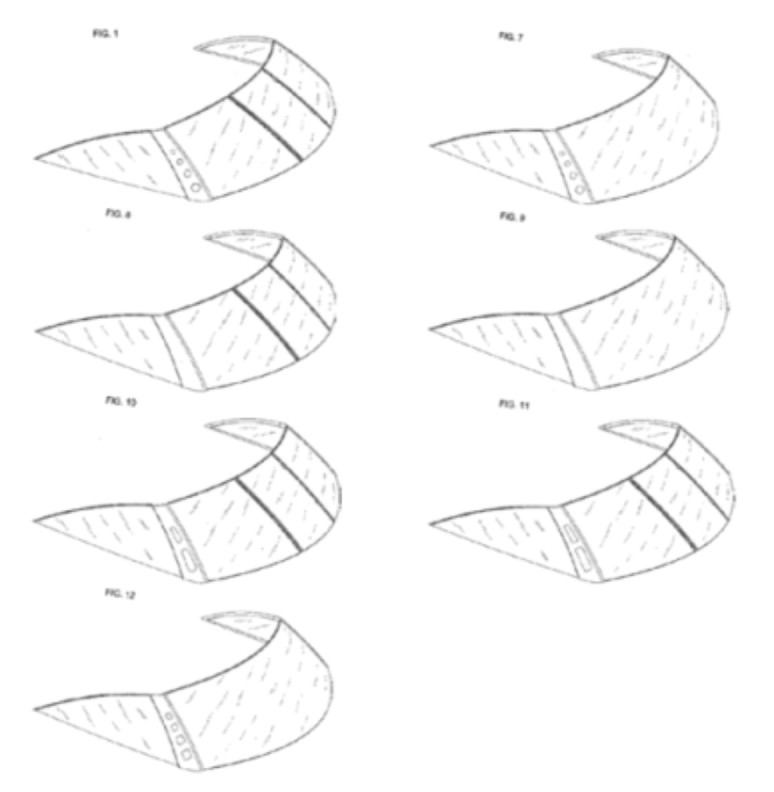Federal Circuit confirms prosecution history estoppel applies to US design patents
Pacific Coast Marine Windshields, Ltd. v. Malibu Boats, LLC (Fed. Cir. 2014)
In a case which has significant implications for design filing strategies, the US Federal Circuit confirmed that the principle of prosecution history estoppel applies to design patents.
The case relates to a US design patent D555,070, which is directed to an ornamental design for a marine windshield. Pacific Coast had brought an action for infringement of the ‘070 patent against Malibu Coast and others in the Middle District of Florida. This resulted in a summary judgement of non-infringement due to the court’s finding that prosecution history estoppel barred the infringement claim. Pacific Coast subsequently appealed the decision to the Federal Circuit, arguing that prosecution history estoppel did not apply to design patents.
At the time of filing, the design patent included several embodiments of the design having different vent hole configurations, as shown in the figure below. The examiner determined during prosecution that the different embodiments represented five patentably distinct groups of designs and issued a restriction requirement. In response, the applicant elected a single group relating to the embodiment having four circular holes and cancelled the figures relating to all other embodiments, including those having two and four rectangular vent holes. As issued, the claim language stated “[t]he ornamental design for a marine windshield, as shown and as described”.

Malibu’s accused windshield design included three rectangular vent holes. At issue in this case was therefore whether Pacific Coast were estopped from asserting infringement of the ‘070 patent against such a design due to the cancellation of the rectangular two- and four-hole embodiments during prosecution. After confirming that the principles of prosecution history estoppel apply to design patents, the Federal Circuit determined that whether or not the infringement claim was barred in the present case turned on: (1) whether there was a surrender of claim scope; (2) whether it was for reasons of
patentability; and (3) whether the accused design was within the scope of the surrender.
The court found that there was indeed a surrender of claim scope during prosecution, noting that the by cancelling figures having two vent holes and no vent holes, the claim was limited to what the remaining figure showed – a windshield having four vent holes “and colourable imitations thereof”. Furthermore, the court rejected Pacific Coast’s arguments that only surrenders to avoid prior art fall within the doctrine of prosecution history estoppel and concluded that, in line with the Supreme Court decision in Festo, the claim scope was surrendered “in order to secure the patent”.
On the third question, however, the court rejected the district court’s conclusion that by cancelling the zero and two vent hole embodiments, the applicant had surrendered the entire claim scope from zero up to four holes. The Federal Circuit emphasized that individual designs are claimed and this does not suggest that the territory between those designs is also claimed. It followed that since the patentee neither submitted nor surrendered any three-hole windshield designs, the accused three-hole design was not within the scope of surrender. As a result, prosecution history estoppel did not in this case bar Pacific Coast’s infringement claim and the case was remanded back to the district court for consideration as to whether the three rectangular vent holes of the accused windshield design is a colourable imitation of the claimed design having four circular vent holes.
This decision has important implications for US design applications that include multiple embodiments. If an examiner decides that at least some of the embodiments of a design are patentably distinct, an applicant is essentially required to file divisional applications for the unelected embodiments in order to avoid prosecution history estoppel. Should an applicant reluctant to pay the divisional filing fees choose not pursue the unelected embodiments in divisional applications, that applicant could end with a narrower scope of protection than if the cancelled designs were never included in the first place. This is because whilst the cancelled embodiments could potentially have enjoyed protection as colourable imitations of the elected embodiment, under the doctrine of prosecution history estoppel those cancelled designs are specifically excluded from the scope of protection offered by the resulting design patent. This point should be borne in mind in particular by European applicants filing a US design patent claiming priority from a Community design which can include many embodiments within a single application.
